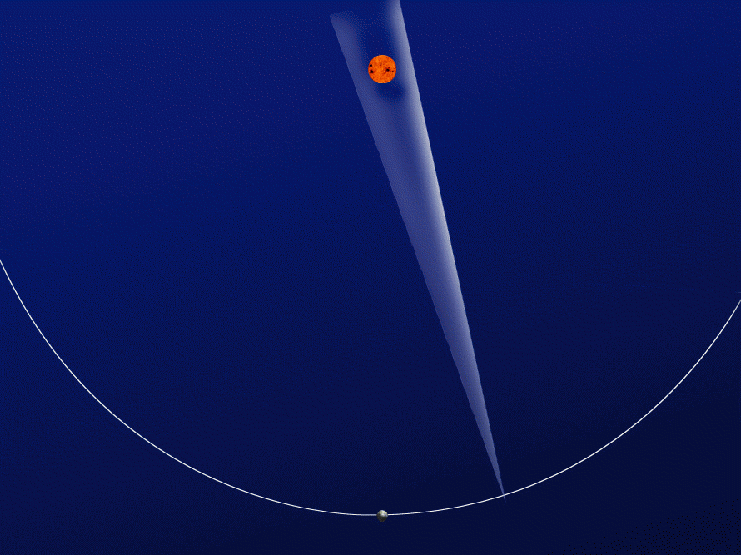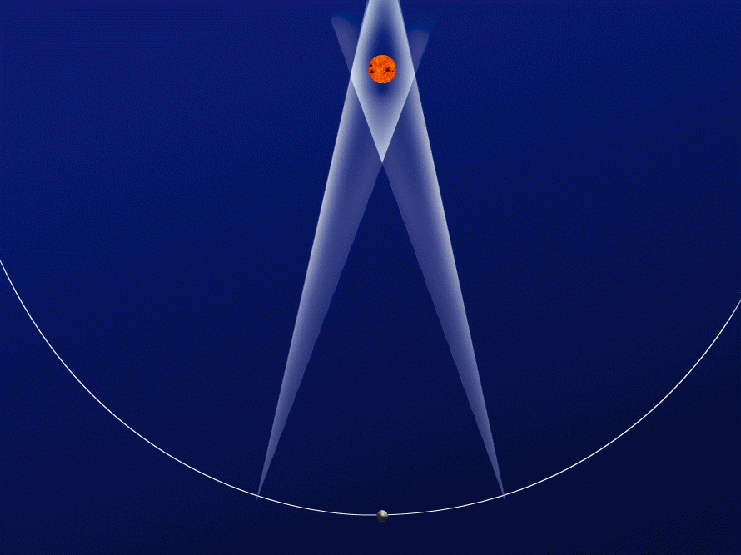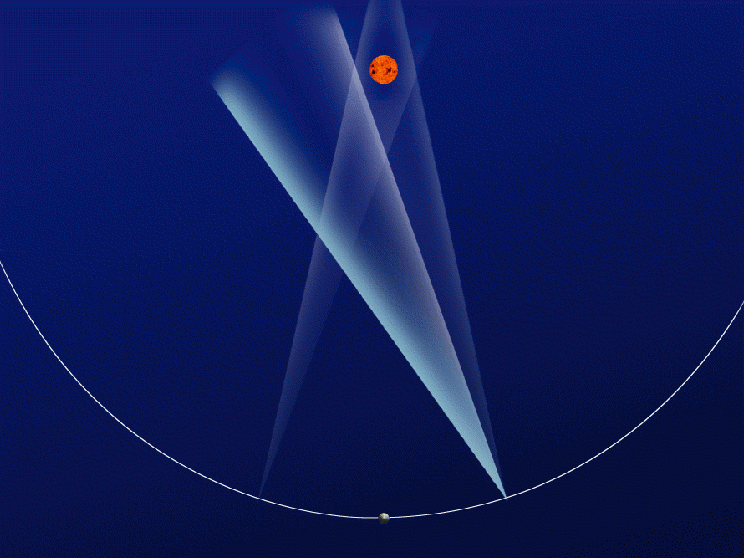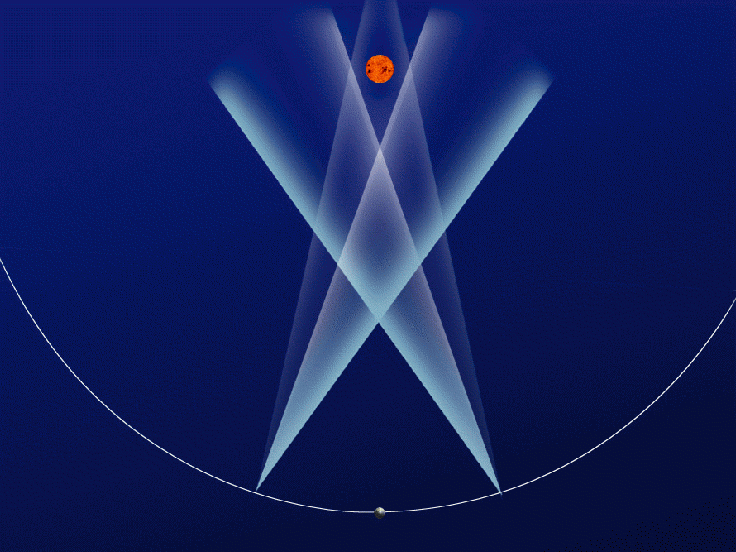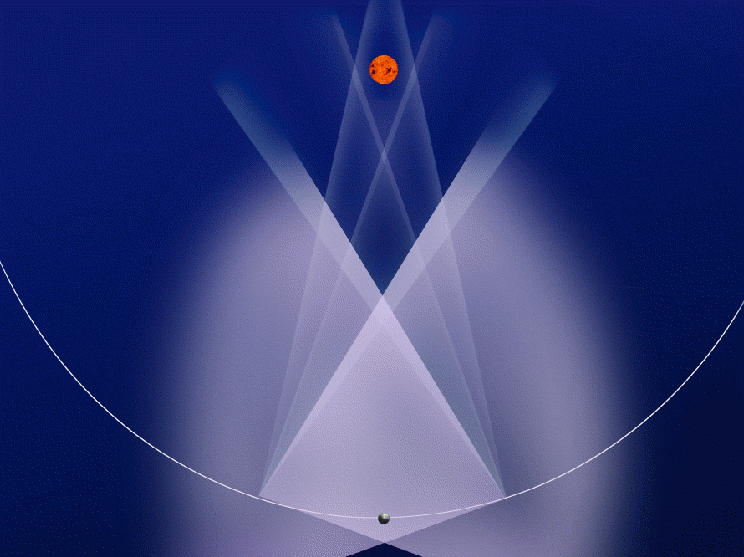OVERVIEW
SECCHI
Suite of remote sensing instruments consisting of two white light coronagraphs (COR1 and COR2) and an EUV imager (EUVI), collectively referred to as the Sun Centered Imaging Package (SCIP), and a Heliospheric Imager (HI).
SCIP
SECCHI Sun Centered Imaging Package (SCIP)
HI
Heliospheric Imager (HI)
SECCHI will follow three-dimensional Coronal Mass Ejections (CMEs) from birth at the Sun's surface, through the corona and interplanetary medium, to impact at Earth. We anticipate major breakthroughs in understanding the origin and consequences of CMEs, in determining their three-dimensional structure, in identifying the magnetic configurations and evolutionary paths leading to CMEs, in determining the key factors controlling their trajectories, and in achieving the national goal of predicting space weather.
SPECIFICS

Coronagraphs
COR1 and COR2 observe the inner (1.4-4. Rsun) and outer (2-15 Rsun) corona with greater frequency and polarization precision than ever before. COR1 will be the first space borne instrument to explore the inner corona in white light and pB down to 1.4 Rsun. COR2 will image the corona with five times the spatial resolution and three times the temporal resolution of LASCO/C3.
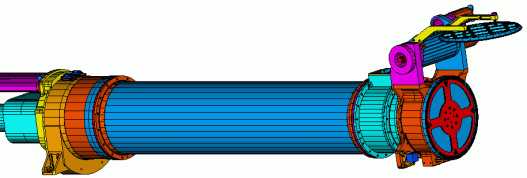
Extreme Ultraviolet Imager (EUVI)
EUVI provides full Sun coverage with twice the spatial resolution and dramatically improved cadence over EIT.
EUVI observes the photospheric magnetic field, chromosphere, and innermost corona underlying the same portions of the corona and the heliosphere observed by COR1, COR2, and HI.

Guide Telescope
The Guide Telescope acts as a fine sun sensor for the EUVI and provides the error signal for the EUVI fine pointing system.
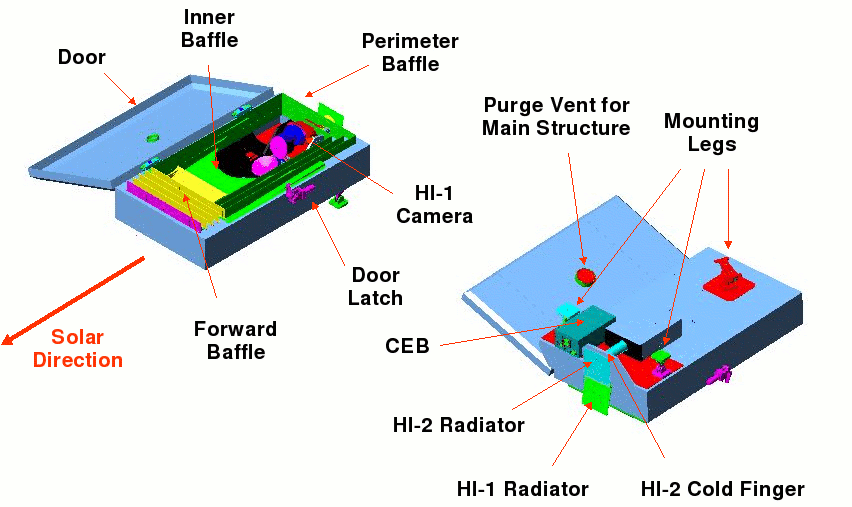
Heliospheric Imager (HI)
The most novel instrument, HI extends the concept of traditional externally occulted coronagraphs to a new regime, the heliosphere from the Sun to the Earth (12-318 Rsun). HI will obtain the first direct imaging observations of coronal mass ejections in interplanetary space.

